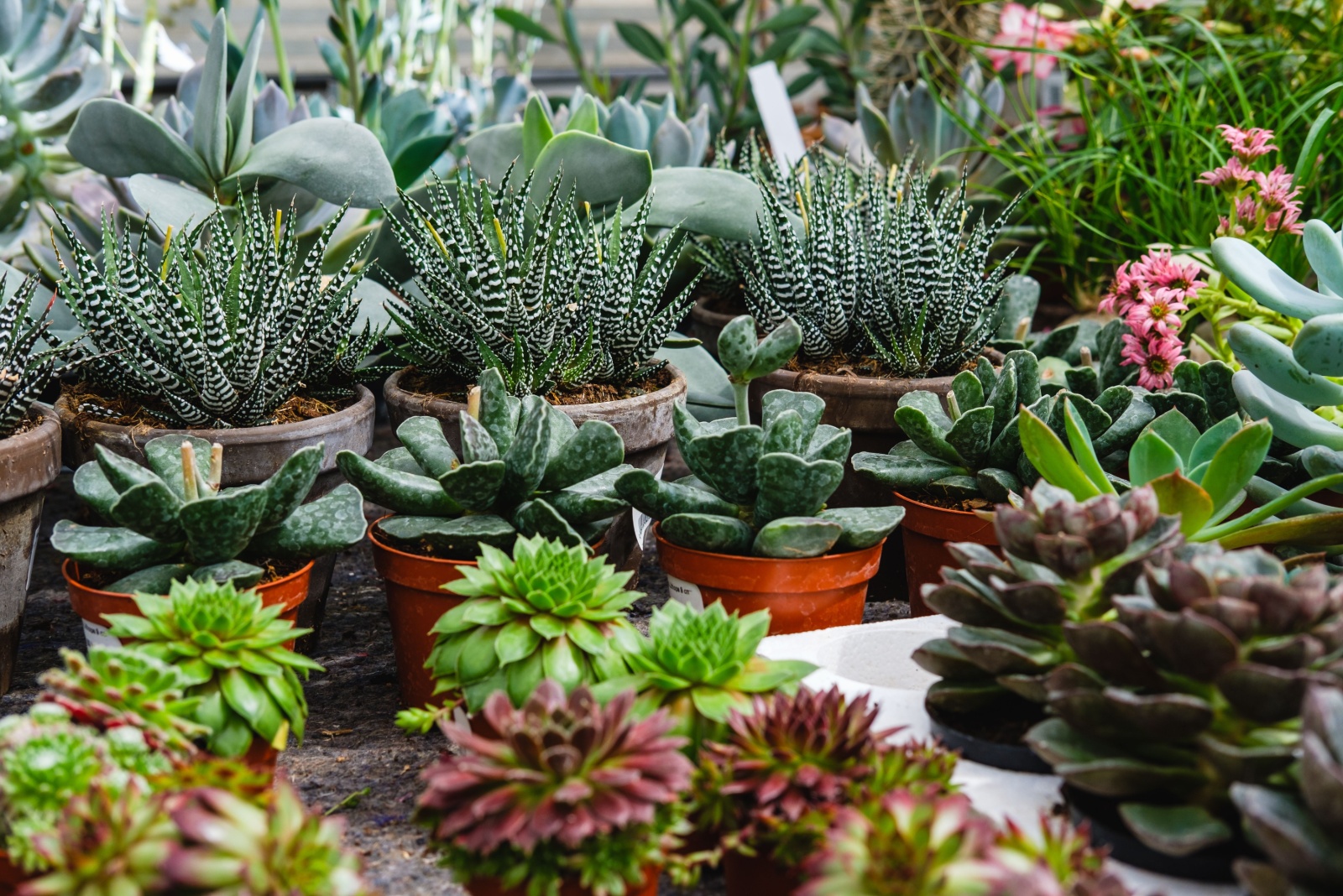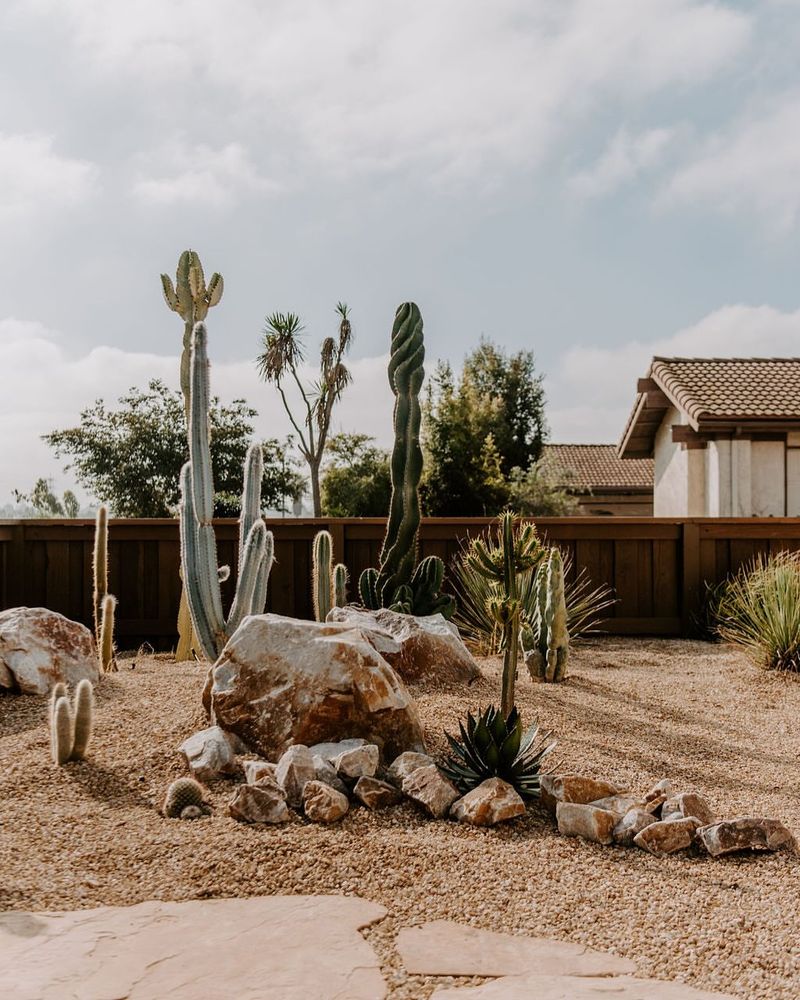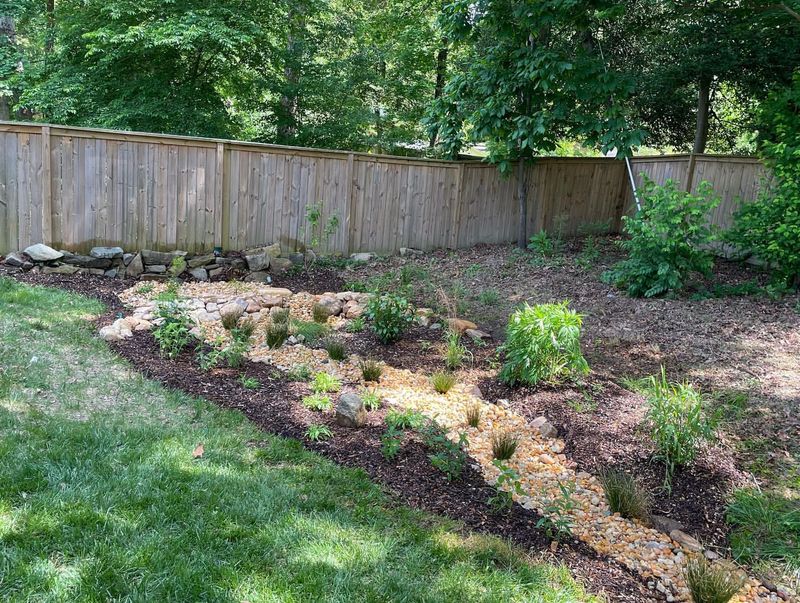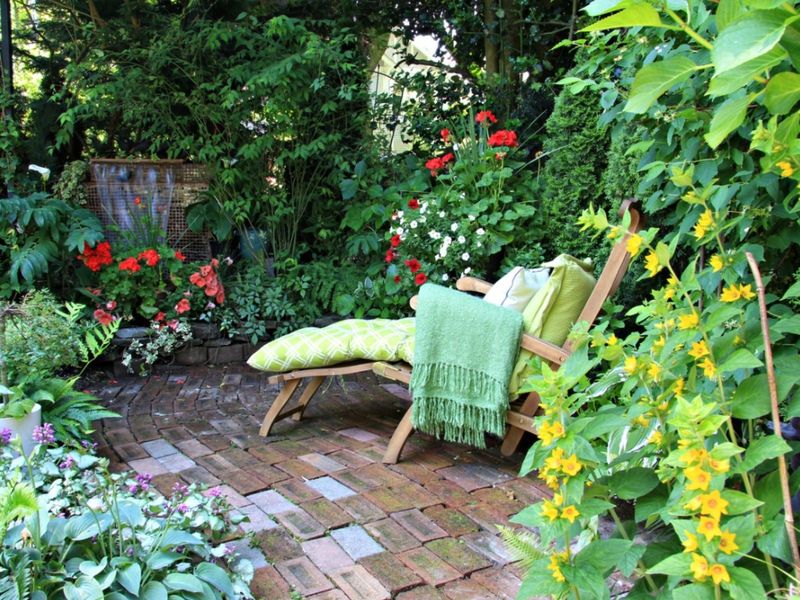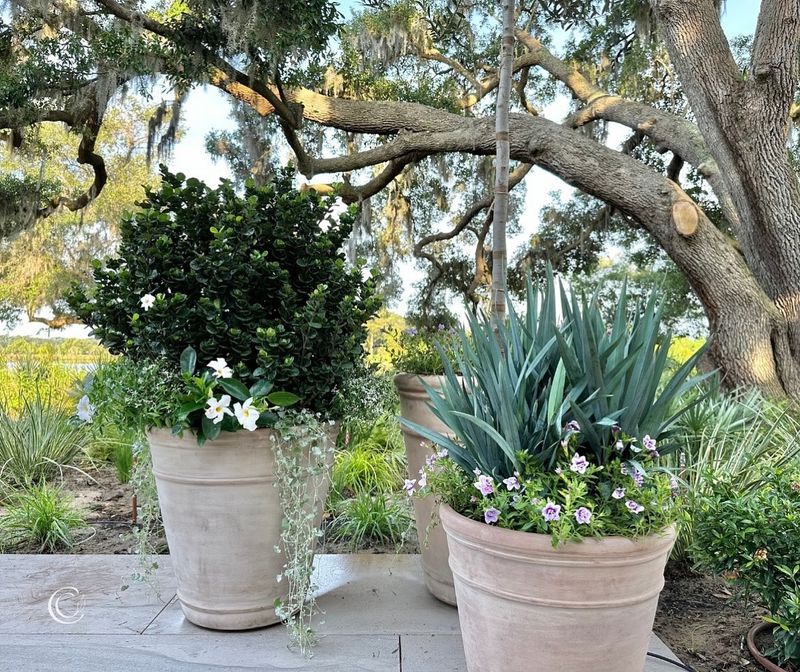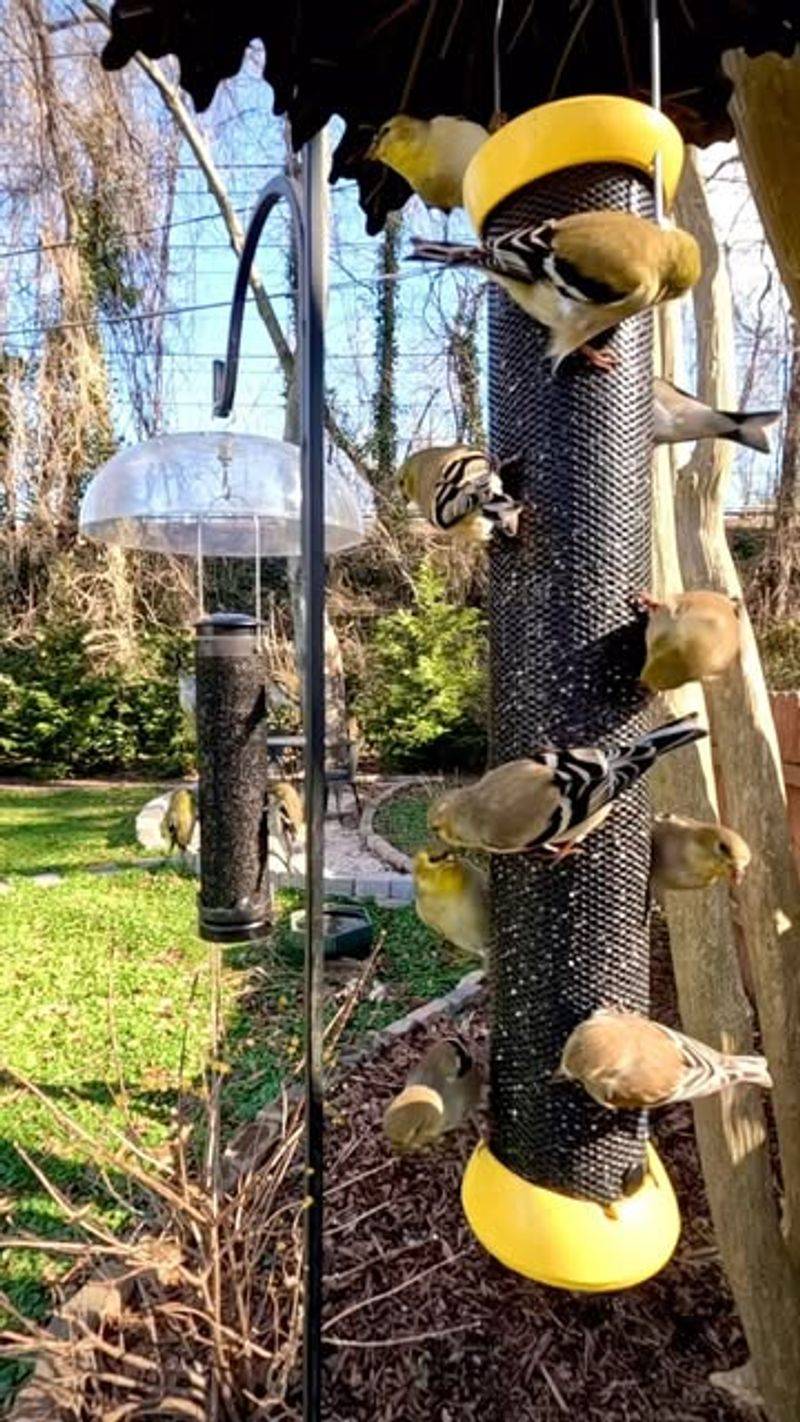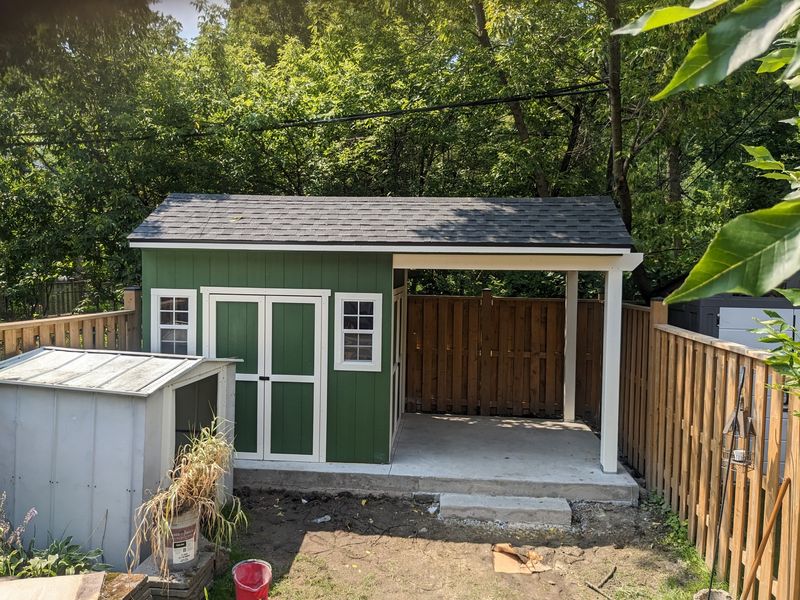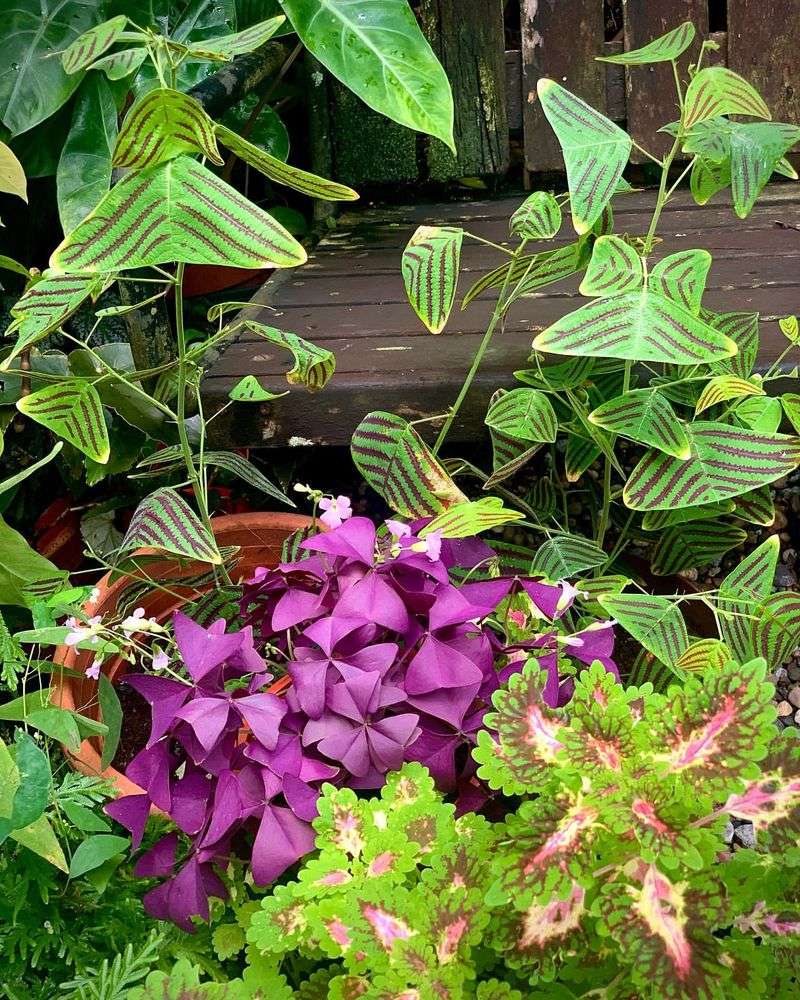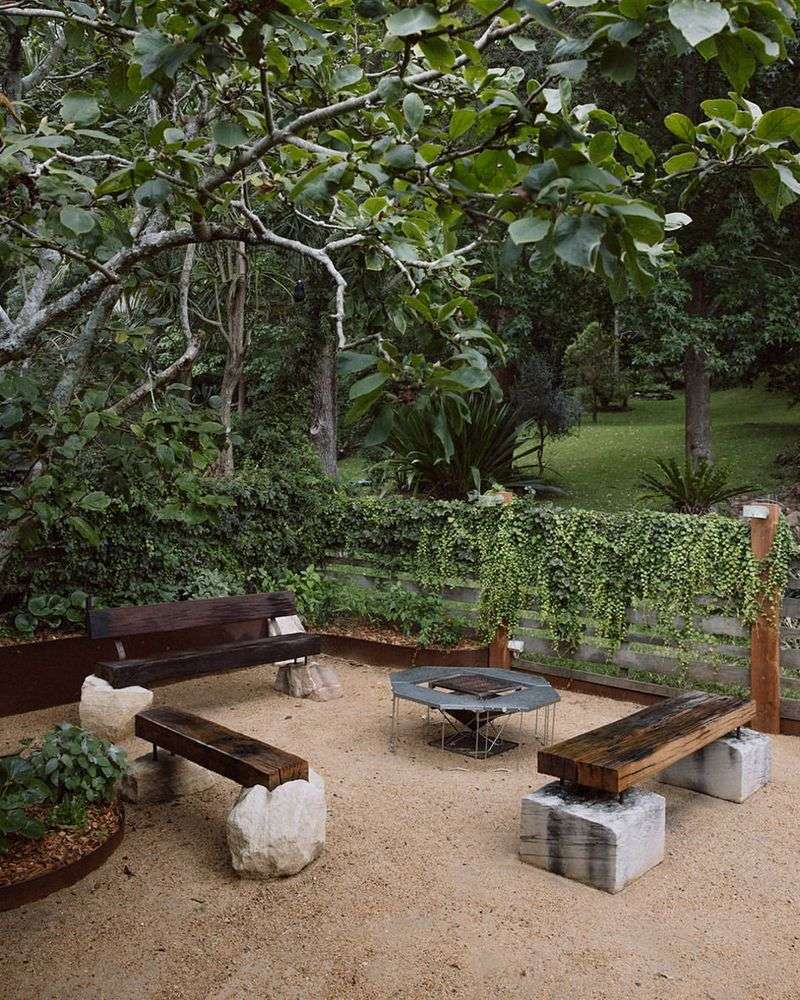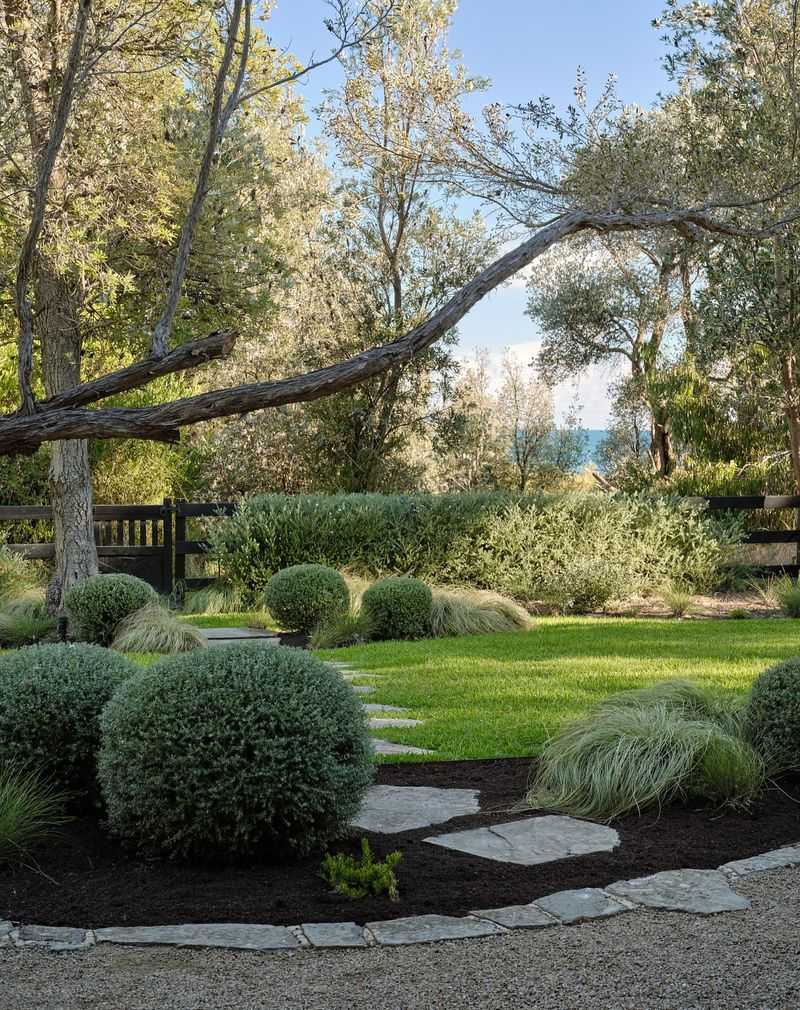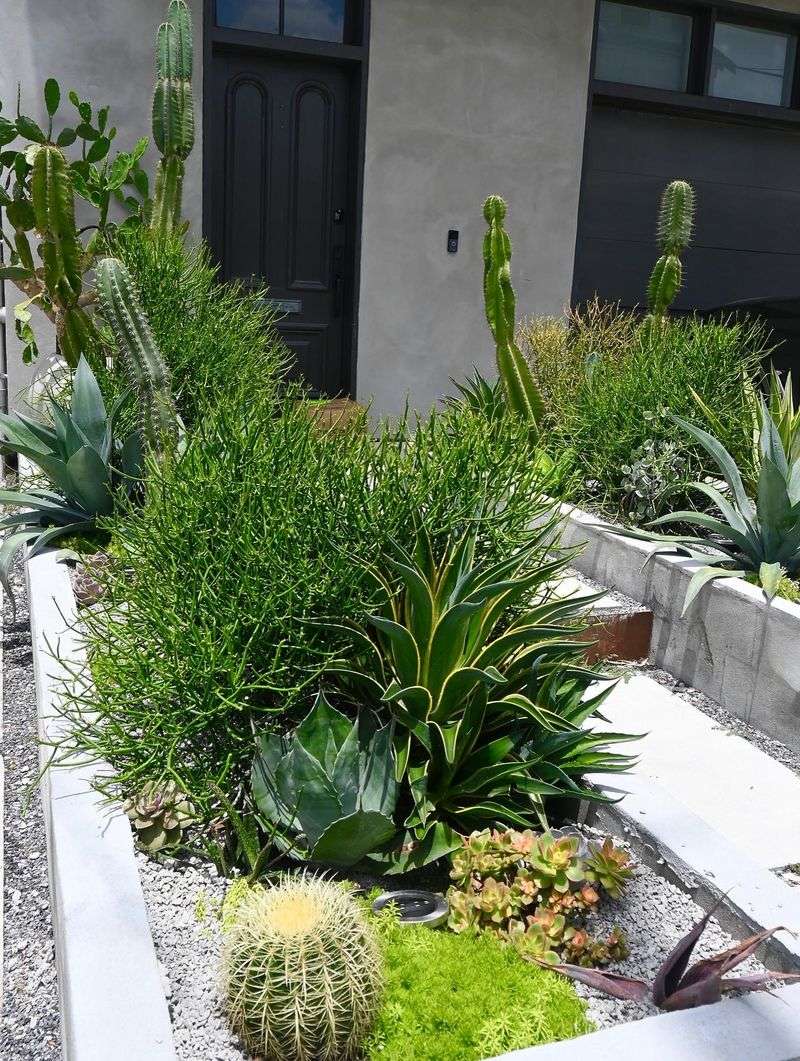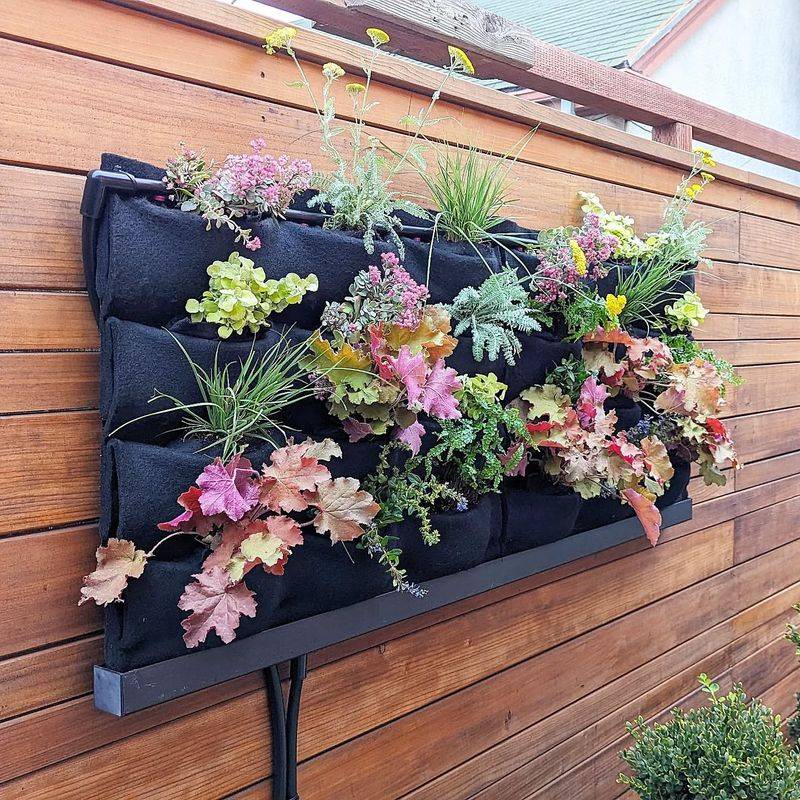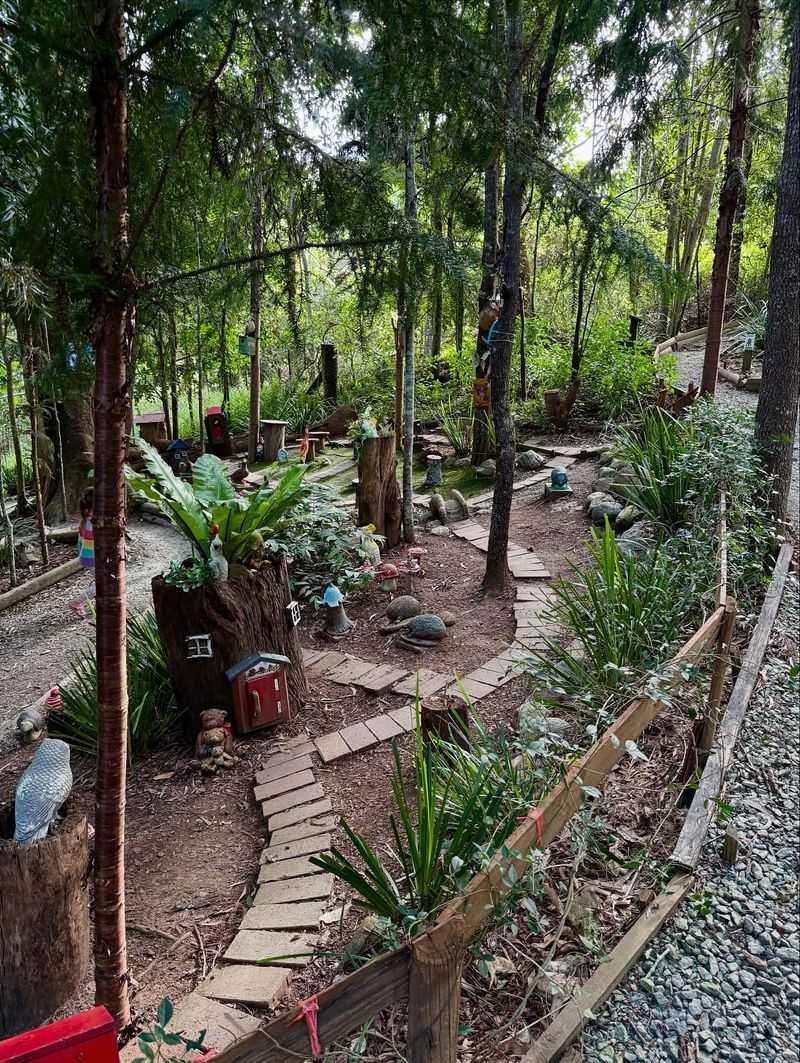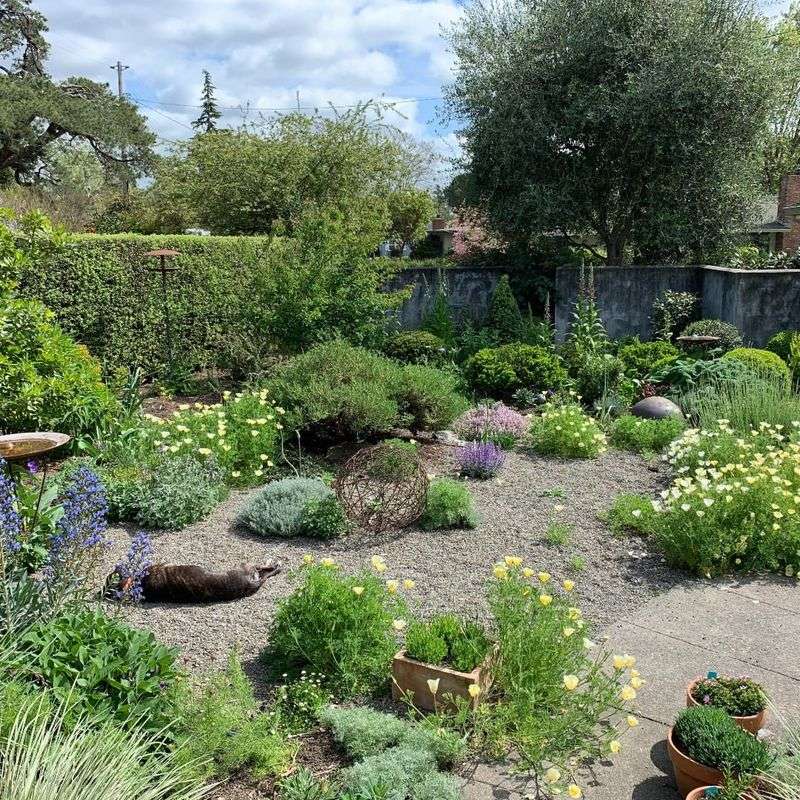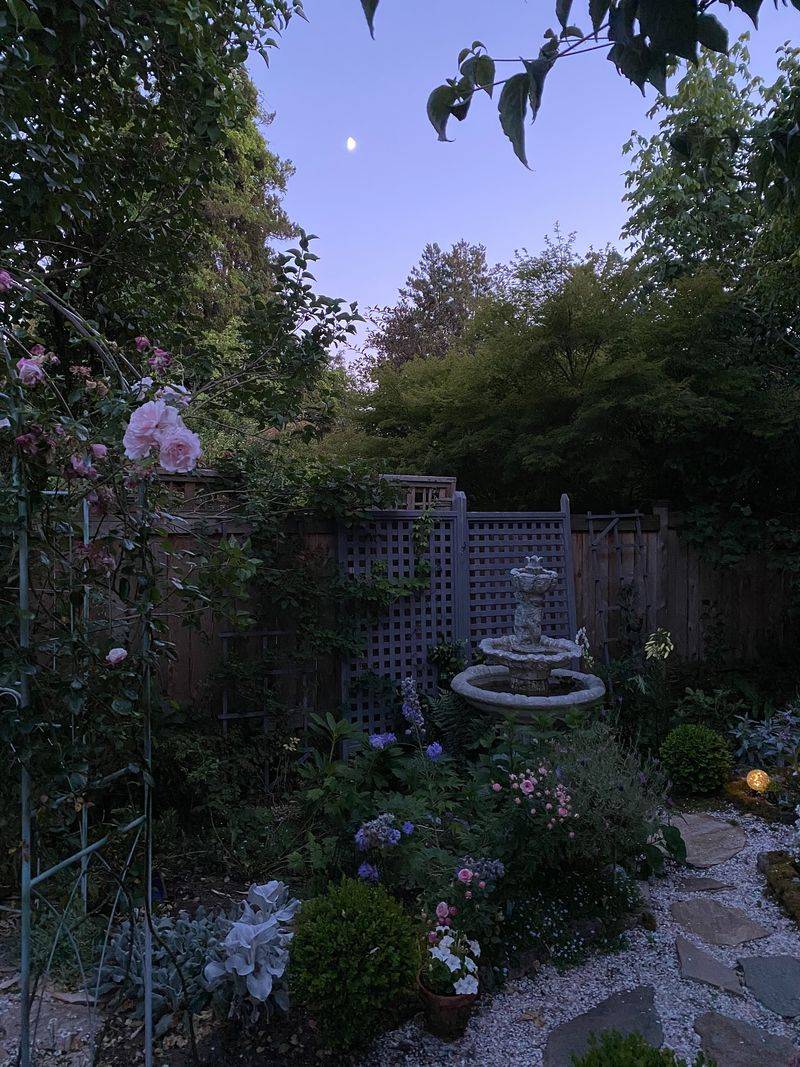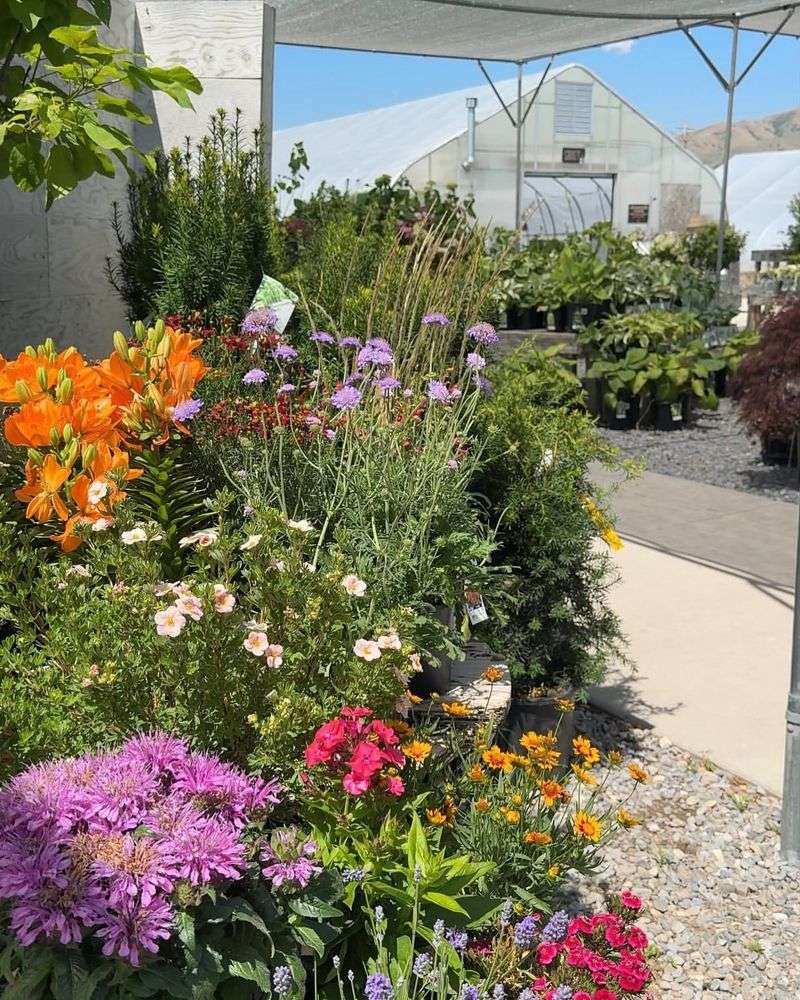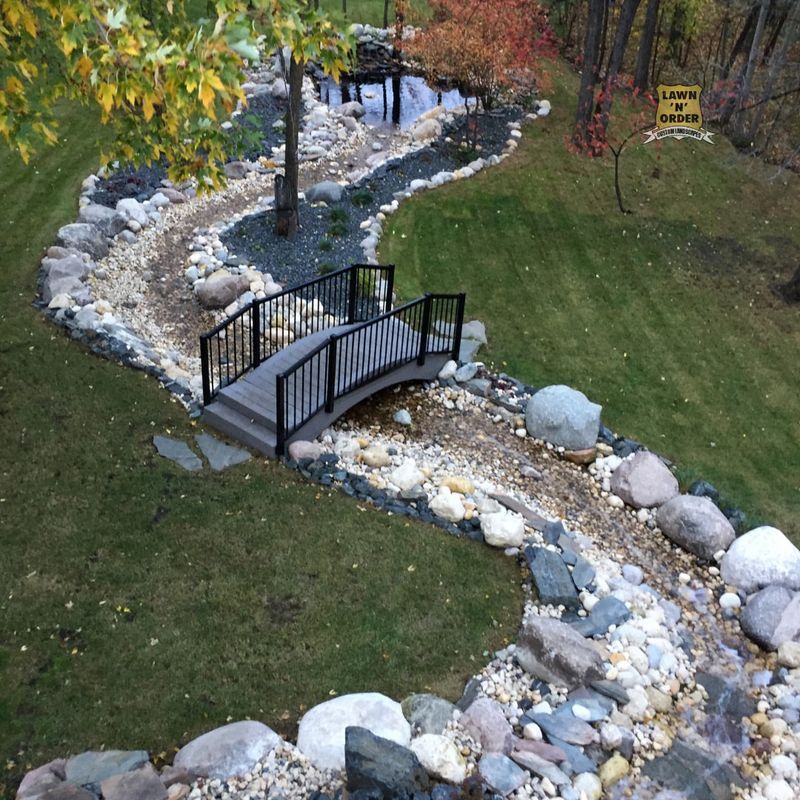Texas suburban homes often feature those puzzling corners in yards where nothing seems to fit right. These awkward spaces collect leaves, look bare, or become weed magnets when left untended.
Finding creative solutions for these tricky spots can transform your entire landscape. Whether it’s a narrow passage between fences or that odd triangle where property lines meet, there’s always a way to make these spaces functional and beautiful.
As a landscape designer who’s worked with hundreds of Texas homeowners, I’ve gathered some practical ideas that work well in our climate. These solutions consider our hot summers, occasional freezes, and the need for water-wise options.
1. Tiered Rock Gardens
Starting with a few limestone boulders at the base creates immediate visual interest. Our Texas heat makes these spots perfect for drought-resistant plants like agave, yucca, and native cacti.
Between rocks, add decomposed granite or river pebbles to minimize maintenance. The different heights naturally draw the eye upward, making the corner appear larger than it actually is.
My clients in Plano transformed their awkward fence corner using this technique, adding solar-powered accent lights that create dramatic shadows at night.
2. Rain Garden Depressions
Many Texas suburbs have corners where water naturally collects after storms. Instead of fighting this tendency, work with it by creating a shallow depression filled with water-loving native plants.
Gulf muhly grass, Louisiana iris, and dwarf palmetto thrive in these conditions and provide habitat for local wildlife. The slight bowl shape helps capture precious rainfall that would otherwise run off into storm drains.
During dry periods, these gardens still look attractive while being ready to perform their water-management function when the next downpour arrives.
3. Meditation Nook
Tucked-away corners offer natural privacy that’s perfect for creating a personal retreat. Start with a small decomposed granite pad or a few flagstones as a base for a comfortable outdoor chair.
Around this seating area, plant tall ornamental grasses like Lindheimer’s muhly that sway gently in the breeze. Their rustling sounds create a soothing backdrop for morning coffee or evening unwinding.
One Austin homeowner added a small tabletop fountain to mask neighborhood noise, completing her perfect reading spot in what was once an ignored corner.
4. Container Collections
Grouping several pots of different heights creates instant impact in awkward corners without major landscape modifications. Terra cotta containers feel right at home in Texas settings and weather beautifully with age.
Fill them with seasonal color that can be swapped out as needed. For year-round structure, include at least one evergreen plant like compact holly or rosemary as an anchor.
Containers also allow you to grow plants that might otherwise struggle in your native soil, opening up possibilities for acid-loving plants even in alkaline Texas conditions.
5. Bird-Watching Stations
Forgotten corners can become wildlife hotspots with thoughtful planning. Mounting a feeding station or birdbath creates a focal point that draws attention to previously overlooked areas.
Surrounding plantings should include berry-producing natives like American beautyberry and yaupon holly that provide natural food sources. Dense shrubs offer birds protection from predators and nesting opportunities.
The corner by my kitchen window transformed from a weed patch to my morning entertainment once I installed a simple platform feeder and native plants that attract cardinals and chickadees year-round.
6. Spiral Herb Gardens
Circular spiral designs fit perfectly into angular corners, softening harsh lines with their gentle curves. Building a spiral with local stone creates different microclimates – moister soil at the bottom, drier at the top.
Mediterranean herbs like rosemary, sage, and thyme thrive in Texas heat and require minimal water once established. Place moisture-loving herbs like parsley and mint at the base where they’ll catch more runoff.
Besides being practical for cooking, these compact gardens smell wonderful when brushed against and attract beneficial pollinators to your yard.
7. Tool Storage Solutions
Practical corners can solve storage dilemmas while looking intentional. A small cedar shed with a green roof of sedums blends function with aesthetics and stands up to Texas weather extremes.
For tighter spaces, consider a vertical tool rack attached to the fence, perhaps with a fold-down potting shelf. Climbing plants like crossvine can soften the structure while providing spring blooms.
Several homeowners I’ve worked with in Dallas suburbs have incorporated rainwater collection barrels into these utility corners, making them both functional and environmentally friendly.
8. Butterfly Triangles
Angular corners naturally lend themselves to triangular planting beds that attract colorful visitors. Native milkweed forms the backbone of any butterfly garden, providing essential habitat for monarch caterpillars.
Add lantana, Gregg’s mistflower, and fall aster to provide nectar sources throughout the growing season. These Texas-tough perennials handle our summer heat while requiring minimal supplemental water.
Leaving a small open area with damp sand allows butterflies to gather minerals – a fascinating behavior called “puddling” that’s especially visible in corner gardens where insects feel protected.
9. Fire Pit Gathering Spots
Corners often provide natural boundaries that make them ideal for containing fire features. Using limestone or granite blocks common to Texas creates a cohesive look that ties into the local landscape.
Surrounding the fire pit with decomposed granite prevents accidental grass fires during our dry seasons. Comfortable, weather-resistant seating transforms this functional feature into a social hub.
One family in Katy extended their outdoor living season by months after adding a simple gas fire pit to their previously unused corner, making it their favorite spot for evening gatherings.
10. Shade Tree Retreats
Planting a single specimen tree creates an anchor point that draws attention away from awkward angles. Mexican white oak and Texas red oak offer relatively fast growth while providing crucial summer shade.
Beneath the canopy, shade-tolerant native plants like inland sea oats and wood ferns thrive with minimal care. Adding a simple bench creates a natural resting spot during hot Texas afternoons.
The dappled light in these corners makes them perfect for reading or enjoying morning coffee, transforming previously unused spaces into favorite yard destinations.
11. Succulent Showcases
Sunny corners become perfect stages for dramatic succulent displays that thrive in our heat. Agave americana provides a bold architectural statement while spineless prickly pear offers interesting texture without the hazards.
Between larger specimens, ground-hugging sedums and ice plants create living mulch that suppresses weeds. Their varied colors and forms provide year-round interest even when not in bloom.
After last year’s unusual freeze, many gardeners in San Antonio discovered which succulents truly deserve the “Texas-tough” label, with varieties like red yucca and Texas sotol proving their resilience.
12. Vertical Garden Walls
Fence corners provide ready-made support for living walls that maximize growing space. Installing simple trellis panels creates a framework for climbing plants or hanging planters.
Vining vegetables like cucumbers and beans work wonderfully in these spaces during spring and fall growing seasons. For year-round greenery, crossvine and Carolina jessamine offer evergreen foliage and seasonal blooms.
Several homeowners in Houston suburbs have cleverly incorporated rainwater collection into these systems, using gravity to irrigate their vertical gardens during our periodic drought conditions.
13. Children’s Discovery Corners
Transforming awkward spaces into kid-friendly zones adds functionality for growing families. Weather-resistant chalkboards mounted on fence corners encourage outdoor creativity without taking up valuable play space.
Sensory plants like lamb’s ear (soft), ornamental grasses (sound), and mint (smell) engage multiple senses while teaching children about nature. Child-sized log stumps create informal seating for little gardeners.
My neighbor’s previously unused corner now houses a simple weather station where her children record rainfall and temperatures, turning a forgotten spot into an outdoor science classroom.
14. Gravel Gardens
Inspired by Texas’ natural limestone landscapes, gravel gardens offer practical solutions for difficult corners. Local crushed limestone creates a permeable base that allows rainfall to penetrate while suppressing weeds.
Architectural plants like desert spoon and Mexican feather grass emerge from the gravel, creating dramatic textural contrasts. Their deep root systems access moisture far below the surface, requiring minimal supplemental irrigation.
One Austin family artfully arranged limestone boulders within their gravel corner, mimicking the Hill Country landscapes they loved hiking through on weekends.
15. Moonlight Gardens
Evening-focused gardens transform underused corners into nighttime destinations. White-flowering plants like gaura and evening primrose seem to glow in moonlight, creating magical spaces for summer evenings when temperatures finally drop.
Silver-leaved plants such as Texas sage reflect even minimal light, extending enjoyment into nighttime hours. Adding solar-powered path lights ensures safe navigation without complex wiring.
The corner beside my patio went from daylight afterthought to evening showstopper after I redesigned it with night-viewing in mind, making Texas summer evenings even more enjoyable.
16. Pollinator Pit Stops
Even small corners can support remarkable biodiversity when planted with native nectar sources. Gregg’s mistflower attracts clouds of queen butterflies while Turk’s cap brings in hummingbirds throughout summer.
Creating layers with different plant heights ensures visitors from ground-dwelling bees to hovering moths find suitable feeding stations. A simple bee house mounted on the fence adds nesting habitat for native solitary bees.
Several master gardeners in Dallas suburbs have documented surprising increases in yard biodiversity after establishing even small pollinator corners, proving size isn’t everything in ecological gardening.
17. Dry Creek Drainage Solutions
Many Texas properties have problematic drainage corners where water collects or erodes soil during heavy downpours. Creating decorative dry creek beds directs water flow while adding visual interest even when dry.
Arranging limestone rocks of varying sizes creates natural-looking channels that prevent erosion. Moisture-loving plants like iris and sweetflag placed strategically along the edges thrive during brief wet periods.
After implementing this solution in their backyard corner, a family in The Woodlands no longer deals with soggy patches or fence damage from water pooling after typical Gulf Coast thunderstorms.

